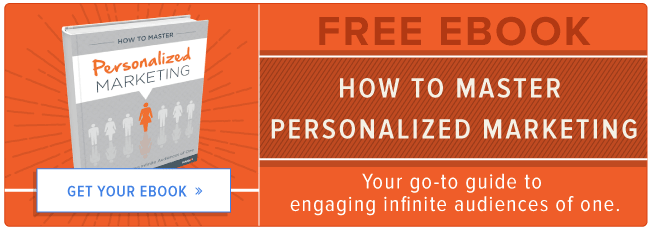
In theory, the “tricks” to delivering awesome customer service are pretty straightforward:
- Empathy
- Appreciation
- Helpfulness
Seems pretty easy, right? Just develop these three skills, and you’ll be set. Sure, you can tune these by mastering the “thank you,” or by understanding how things like tone and word choice make a difference in support.
But in practice, delighting customers isn’t so straightforward — what actually works doesn’t always reflect what most of us would assume.
There are quite a few counterintuitive truths that can make or break how your customers feel about your service. Below are five surprising data points on what people really expect out of “good” customer service.
1) Should you start with the good news, or the bad news? It depends.
How many times has someone asked you whether you want them to start with the good news or the bad news?
It’s an old cliche, but it turns out that it actually does make a difference. And the order you choose can actually change the way your customers feel and act.
Researchers at UC-Riverside tested the order in which they delivered news to subjects, and gauged their responses and behavior.
What they found was interesting: People who were given the bad news first were more likely to feel better about what they were told, while people who were given the bad news last were more motivated to act on the news.
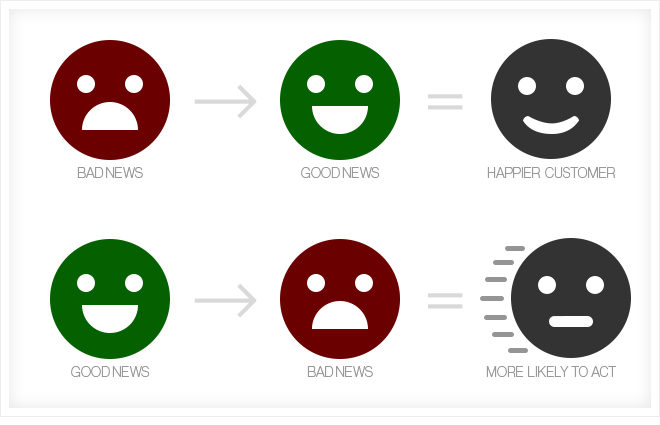
In customer service, we generally want our customers to be happier, so it’s a good idea to lead with the bad news. But if you need to persuade the customer to act, then start with the good.
2) There are things more important than speed in great customer service …
Conventional wisdom would suggest that the faster a customer gets help, the happier they’ll be. And in general, that’s true.
However, there are other, often-overlooked elements that are even more important than speed.
One survey by Gallup measured how engaged customers felt after getting service at a bank.
While customers who felt that the bank offered speedy service were six times more likely to be highly engaged, customers who gave the bank high ratings on “people” factors (like the tellers’ courtesy and willingness to help) were nine times more likely to be fully engaged.
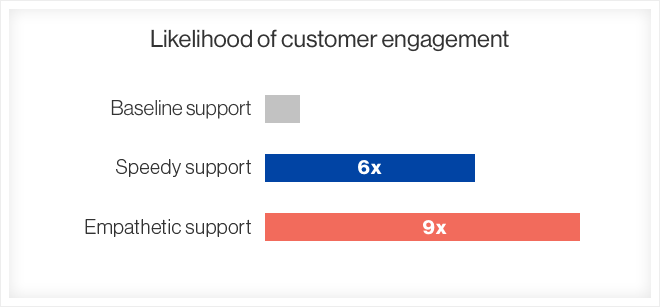
As William J. McEwen puts it in Married to the Brand, “Speed is one factor, but it is markedly less important than having tellers who can deliver services in a friendly and competent manner.”
Rather than a laser focus on speed, try emphasizing thorough, attentive, and friendly customer service.
3) … Except on social media, where speed matters most.
Customer expectations — the expectations that customer happiness hinges on — change based on the medium you’re interacting in.
While speed may not be most important for email, phone, or in-person support, in social media, speed trumps all.
In a survey by The Social Habit, 32% of social media users who contact a brand expect a response within 30 minutes, and 42% expect a response within 60 minutes.
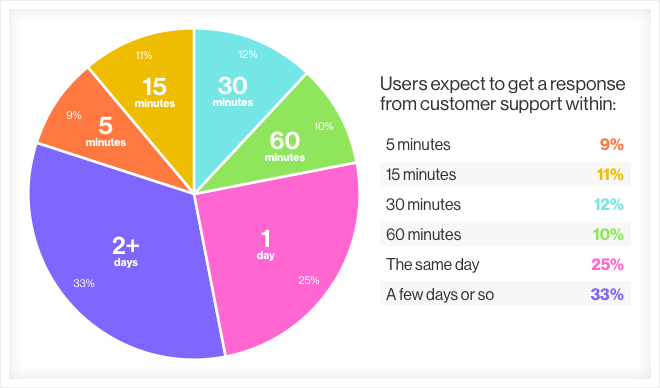
And customers don’t like to wait just because it’s a night or weekend. 57% of customers expect the same response time at night and on weekends as during normal business hours.
It might not be fair, but it’s a fact: Customers expect speedy service on social media.
4) Want loyal customers? Go beyond “delight.”
There’s a lot of talk about ways to delight your customers. It’s a great habit to get into, and it can be a great way to grow your business.
But delighting your customers doesn’t mean you should just be extra nice to them. There’s another powerful way you can develop loyal customers: reduce their effort.
In a 2007 survey by the Customer Contact Council, more than 75,000 customers were surveyed about their phone, chat, and email interactions with customer service representatives. The study found that the single most important factor in increasing customer loyalty is reducing the amount of work the customer has to do to get their problem solved.

How can you apply this?
Simple: If the customer needs to do something to resolve their issue, do it for them.
Does your customer need to follow a link and fill out a form to make updates to their account? Make the updates for them.
Do they need to take steps to troubleshoot an issue they’re having? Set up a screen share on Skype or Google Hangouts and walk them through it.
Customers are often asked to do a lot of work to solve their problems:
- Call another number
- Send in a letter
- Fill out a form
By taking the work off of your customers’ plates, you can both reduce their effort and delight them, as they’ll be more than a little bit surprised by your (unfortunately) unusual approach.
5) What’s the biggest reason people stop doing business with a company?
The answer might surprise you.
Here’s a hint: it’s NOT …
- Price
- Product shortcomings
- Advertising from competitors
Yes, those can all leach customers from you. But, according to the 2010 Customer Experience Report by RightNow, the biggest reason people stop doing business with a company is due to a poor customer service experience.
In fact, 82% of people have left a company because of a bad customer service experience.
On the other hand, creating good customer experiences and happy customers delivers a big — and predictable — return on investment: Happy customers, on average, tell nine people about their experiences.
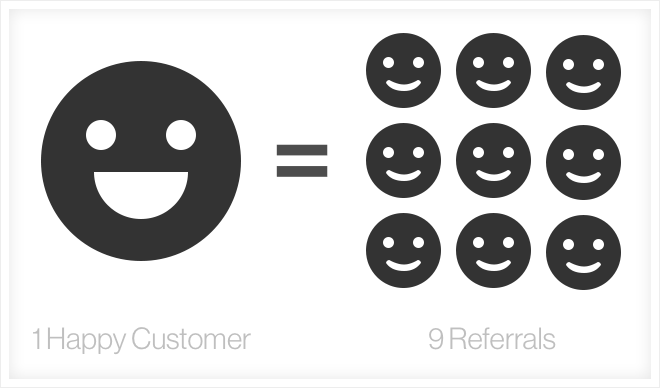
Happy customers also reduce your costs, and the probability of selling to an existing happy customer is up to 14x higher than the probability of selling to a new customer.
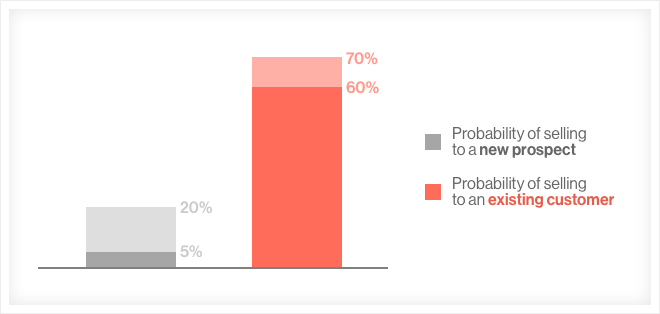
So while bad customer service can crush you, delivering excellent customer service can help build loyal customer relationships, reduce churn, increase retention and referrals, and quickly grow your business.
![]()




